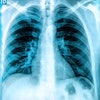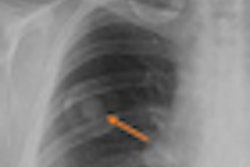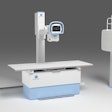A new study published in the July edition of the Journal of the American College of Radiology indicates how hard it can be to change physician behavior. Researchers at a facility in New York found that a more heavy-handed approach was the best way to reduce orders for unnecessary cervical spine x-rays.
Numerous research studies have indicated the poor sensitivity of radiography in detecting C-spine fractures, but many trauma centers and emergency departments continue to use the modality, according to Mark Adams, MD, of the University of Rochester in Rochester, NY. Trauma C-spine x-rays performed after negative CT studies have been conducted are particularly unwarranted, Adams and colleagues wrote (JACR, Vol. 7:7, pp. 531-532).
To reduce the number of unnecessary C-spine radiographs performed at their hospital, the researchers first adopted an approach based on persuasion, including discussions and one-on-one conversations with emergency department, orthopedic, and spine team physicians and midlevel providers. This approach failed to produce the desired result, and the researchers saw no improvement in ordering patterns, with 26% (9/35) of C-spine radiographs characterized as inappropriate as of January 2007.
The facility then took a more aggressive approach: In February 2008, it developed a policy that included a patient work-up algorithm describing when radiography should be used. This algorithm advised that C-spine radiographs were unnecessary when complete C-spine CT studies had been performed. Even with this approach, however, the facility was only able to reduce the number of inappropriate radiographs to 18% (6/34) in January 2008.
The imaging department then got even more aggressive, working through the trauma and emergency departments to get the policy distributed to care providers through the heads of their respective departments, rather than through radiology. Radiologists and radiologic technologists were also encouraged to question all orders for routine C-spine radiographs, whether they were new requests or were requested after C-spine CT studies had been conducted.
This top-down approach worked, and in January 2009 the facility reduced its rate of inappropriate C-spine radiographs to 5% (1/20). The rate remained low at two follow-up periods: February 2009 (0%, 0/21) and August 2009 (10%, 2/21). The higher August numbers may have been due to staff turnover, the researchers noted.
Raising awareness about inappropriate imaging exams is not enough to change referring-physician ordering behavior -- simple and clearly structured algorithms must be developed, and staff in other areas of the medical center must be engaged, the authors concluded.
By Brian Casey
AuntMinnie.com staff writer
July 2, 2010
Related Reading
Docs who own office labs order more tests: study, June 30, 2010
Computerized system may cut excessive prescribing in the ER, June 4, 2010
Order-entry system reduces inappropriate outpatient exams, June 1, 2010
Could decision-support software help radiology fend off RBMs? April 7, 2009
Decision-support software cuts imaging procedure volume, March 24, 2009
Copyright © 2010 AuntMinnie.com



















